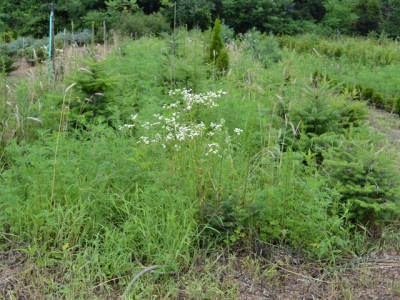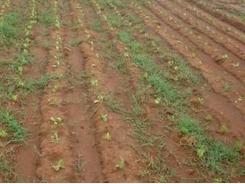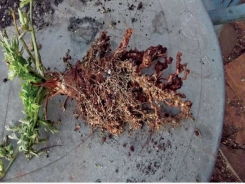Watch out for weeds

The appearance of one or two unknown weeds on my land has reminded me of the danger of leaving them unattended just because they appear to pose no threat due to their low numbers.
Rather eliminate any strange weed before it seeds, just to be on the safe side. Certain weeds pose a huge threat by being able to withstand commonly used herbicides. And you need to be especially vigilant if a ‘new’ weed remains after you’ve applied the usual herbicides for your crop. A farmer may spot one or two such weeds in an otherwise clean land and just leave them there. A season or two later, though, a large population may have established itself – and may be extremely difficult to eradicate or live with.
Many of our weed species are hard-seeded, which means that only a fraction of the seed produced will germinate at any one time. This is a safety mechanism to ensure the seeds will survive various conditions. It’s as if these seeds have built-in timers set to germinate at intervals spanning many years. Some seeds may still be viable for 20 years or more. As noted, one or two weeds may multiply to such an extent it threatens the crop.
Yet this same weed may not be a problem with another crop, where a different herbicide is used. But because weeds are both hard-seeded and prolific seeders, there’s always enough seed to germinate when a crop is planted where the herbicide does not control it.
Major problem
Recently, I was discussing the weed Flaveria bidentis with a farmer. It is extremely difficult to control with herbicides and is a major problem in the Hoedspruit area in Limpopo. It started on his farm along a railway line. He said that an industrial herbicide had been used along this stretch, and Flaveria was the only species which withstood the treatment. I found a single plant this year on my plot and removed it immediately. I have no idea how it got onto my property, but it’s possible the seed may have been attached to some mud on my shoe from the farm mentioned.
Purchased seed
Such foreign seed often also come in through purchased seed. This is more common with fine seed, where the weed seeds, by virtue of their density, size and shape, may go through the sorting machinery. In many such cases, the seed will be resistant to the herbicide used for that crop, which is why it may have been there in the first place. It is often claimed that lucerne seed is dodder free. This is because there is no herbicide available to kill the weed without killing the crop, as it is a parasite that feeds off the vegetative parts, and can be very destructive if introduced.
Nightshade
Another weed seed which can readily come in with commercial seed is Solanum nigrum, commonly called black nightshade. This seed is often found in soya beans. During harvesting, the ripe berries splatter onto the soya bean seed, where they adhere and are very difficult to remove. This weed is also difficult to control with herbicides but is now much less of a hazard as most soya beans are GM and the Roundup (glyphosate) controls the weed.
Water-borne seed
Another way that weeds may enter your property is by water – through canals or pumped from waterways. This is especially the case where flooding occurs on the upper reaches of a river. An example of this is when the tropical cyclone Demoina struck Swaziland, a weed hitherto unknown in the Mpumulanga Lowveld started to appear in flooded areas.
This was quickly referred to as Demoina weed and is now well established. In hindsight, farmers should have removed this new weed before it seeded and so prevented its establishment. It is essential that you are aware of any strange or unknown weeds on your property.
Tools

Phối trộn thức ăn chăn nuôi

Pha dung dịch thủy canh

Định mức cho tôm ăn

Phối trộn phân bón NPK

Xác định tỷ lệ tôm sống

Chuyển đổi đơn vị phân bón

Xác định công suất sục khí

Chuyển đổi đơn vị tôm

Tính diện tích nhà kính

Tính thể tích ao




 Coping with nutsedge
Coping with nutsedge  Making monoculture work
Making monoculture work